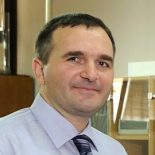
Power engineering measurements, modeling and diagnostics
Process quantities measurements
Signal processing
Energy efficiency
Nanotechnology
The research laboratory is equipped with the computers and equipment for signal sampling up to 100kHz. Exercises for the courses Measurements and signal processing as well as Masurement of process quantities are held in this laboratory. Research equipment includes HP 3458A, HP 4284 A, HP 35665A, TOELLNER TOE7621 broadband amplifier 320W 100 V, reconfigurable control and monitoring system cRIO. In addition, laboratoriy facialities include analog digital cards for frequencies up to 20 MHz, and slower AD converters up to 24 bit resolution.
The capital equipment for electrical measurements encompasses MRU – 200 for measuring the grounding impedance and soil resistivity, Flir T335 thermal imaging camera, ION 7650 device for measuring the quality of electricity class A, device for measuring synchrophoresters STER PMU. The laboratory for high voltage measurements is equipped with current (300/1 A/A) and voltage (110/0.1 kV/kV) transformers for protection and measurement, power transformer (10/0.4 kV / kV), high voltage probes and differential probes, systems for MV and HV DC tests (KPG, Megger) and fault detection (Kehui). In addition, the laboratory is equipped with a 4quadrant SMU system Keithley 2400, AC / DC power supply Keithley 6200, desktop multimeters Keithly 2000 and 2100, and precise handheld multimeters Fluke. In the laboratory it is possible to generate and measure currents of 700 A AC and 120 A DC and voltages of 110 kV AC and DC. It is also possible to very accurately measure currents from pA to mA and voltages from nV to mV as well as resistances from µΩ to TΩ.
Today’s measuring devices in the power engineering are almost exclusively digital, which have all the hardware pre-conditions for measuring and digitizing the currents and voltages. Other (billing) parameters are calculated using a microprocessor system that is an integral part of the measuring device. One of the goals of this research is the development and improvement of computer algorithms for efficient computation, and error correction of all interesting, standard prescribed parameters of the power quality. For this purpose, a part of the prototype of the calibration system for commercial devices for measuring and monitoring electric power quantities and calculation parameters was designed and made. The device is based on an IGBT three-phase inverter, which provides the possibility of generating voltage with a significant fraction of the higher harmonics that can occur in real networks. Control signals are generated on the cRIO FPGA system which is also used for signal measurement and processing. In order to transfer the current and voltage measurement signals to the acquisition system as accurately as possible, our own signal conditioning circuit based on LEM current current transducers and differential voltage probes was developed. The described set-up is also the basis for testing the hypothesis of a doctoral thesis, which attempts to establish a machine learning system for the reliable classification of disturbances in the power grid.
As part of the collaboration with the LPMC research group at EPFL, research on perovskite materials will continue with the aim of developing faster, more accurate and energy efficient sensors. Perovskites are layered structures with the general formula An + 1BnO3n + 1 (A is an alkaline element and B a transition metal) that have attracted much attention in the last decade due to the peculiarities of the observed phenomena: superconductivity, magnetoresistance, spin and charge arrangements, metal-insulator transitions… Partial substitutions in element A (eg Sr – Ca) can cause dramatic changes in properties which shows the high competitiveness of the device. As part of the research, the possibility of using perovskite as a sensor of heat, light, gamma radiation, etc. will be analyzed.